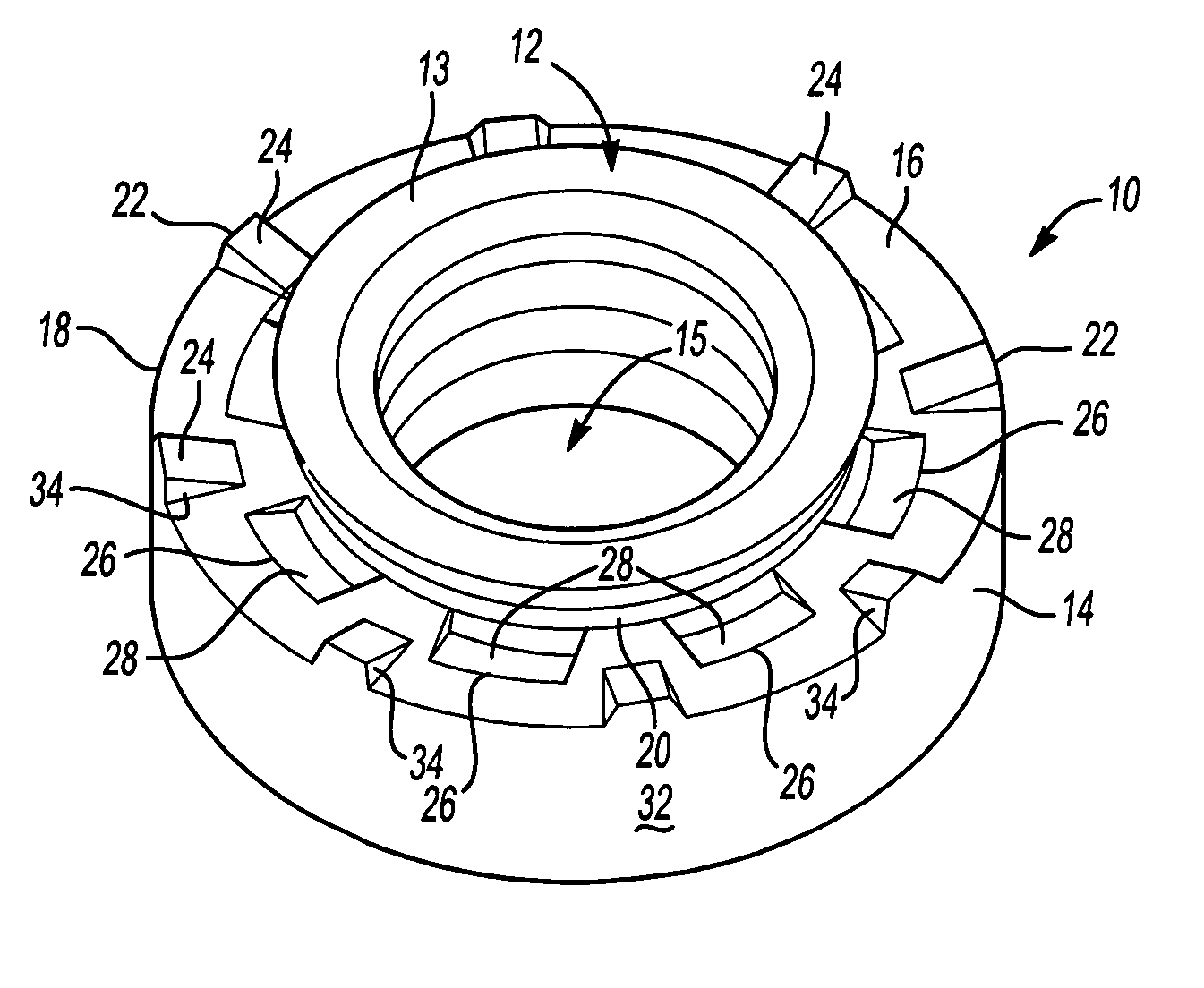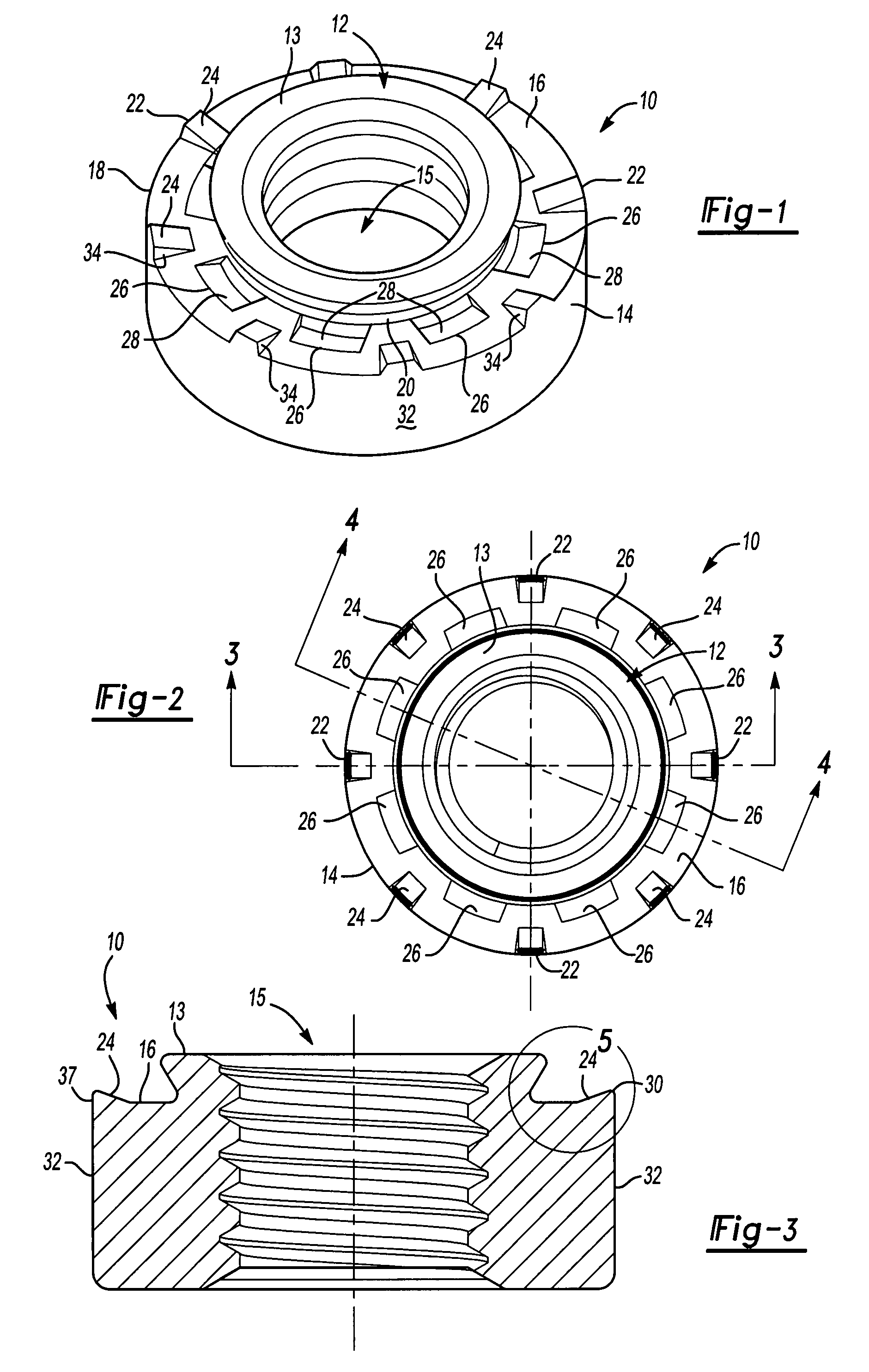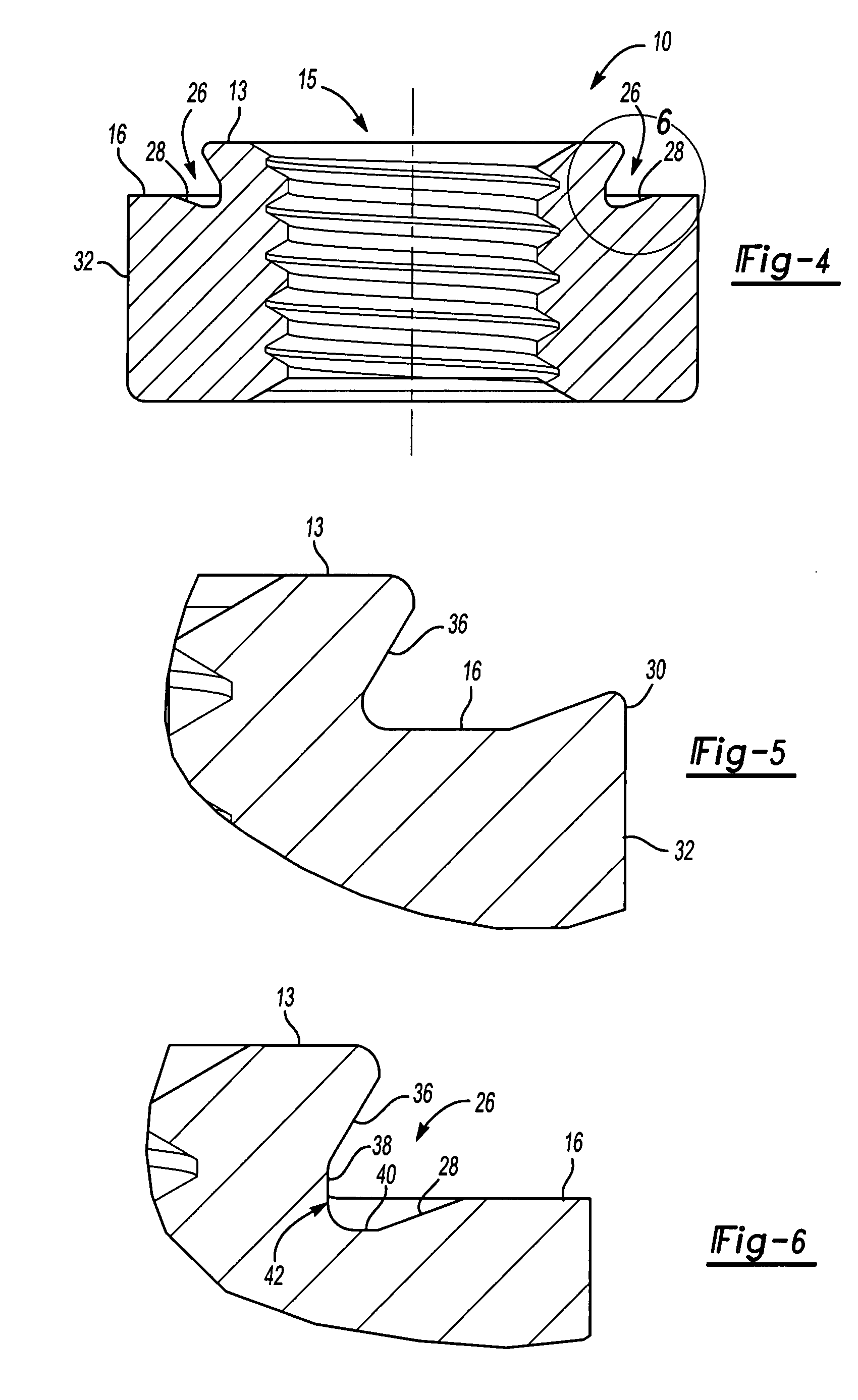Heavy metal pierce nut
a technology of clinching nuts and nut shells, which is applied in the direction of threaded fasteners, screwdrivers, manufacturing tools, etc., can solve the problems of difficult deformation of heavy metal panels downwardly into the groove and beneath, inner and outer side walls, and difficult deformation of heavy metal panels exceeding about 1.5 mm, so as to achieve adequate pull-out resistance, increase the thickness of the panel, and effective deformation
- Summary
- Abstract
- Description
- Claims
- Application Information
AI Technical Summary
Benefits of technology
Problems solved by technology
Method used
Image
Examples
Embodiment Construction
[0018]A self-attaching fastener of the present invention is generally shown in FIG. 1 at 10. The fastener 10 represented in FIG. 1 may be used as a self-piercing or self-clinching fastener as the end user may desire. In the event that the fastener 10 is used as a self-piercing fastener, a pilot portion 12 pierces an aperture through a metal panel (not shown) as is known to those of skill in the art. Alternatively, if the fastener 10 is used merely as a self-clinching fastener, the pilot portion 12 is inserted through a pre-pierced hole as is also known to those of skill in the art.
[0019]An annular flange 14 surrounds the central pilot portion 12 and has a generally planar end face 16 defining a peripheral edge 18. The central pilot portion 12 terminates at a pilot end 113 that is also generally planar and substantially parallel to the generally planar end face 16. The pilot portion 12 defines a bore 15 that is threaded or un-threaded depending upon the desired application. The perip...
PUM
 Login to View More
Login to View More Abstract
Description
Claims
Application Information
 Login to View More
Login to View More - R&D
- Intellectual Property
- Life Sciences
- Materials
- Tech Scout
- Unparalleled Data Quality
- Higher Quality Content
- 60% Fewer Hallucinations
Browse by: Latest US Patents, China's latest patents, Technical Efficacy Thesaurus, Application Domain, Technology Topic, Popular Technical Reports.
© 2025 PatSnap. All rights reserved.Legal|Privacy policy|Modern Slavery Act Transparency Statement|Sitemap|About US| Contact US: help@patsnap.com



